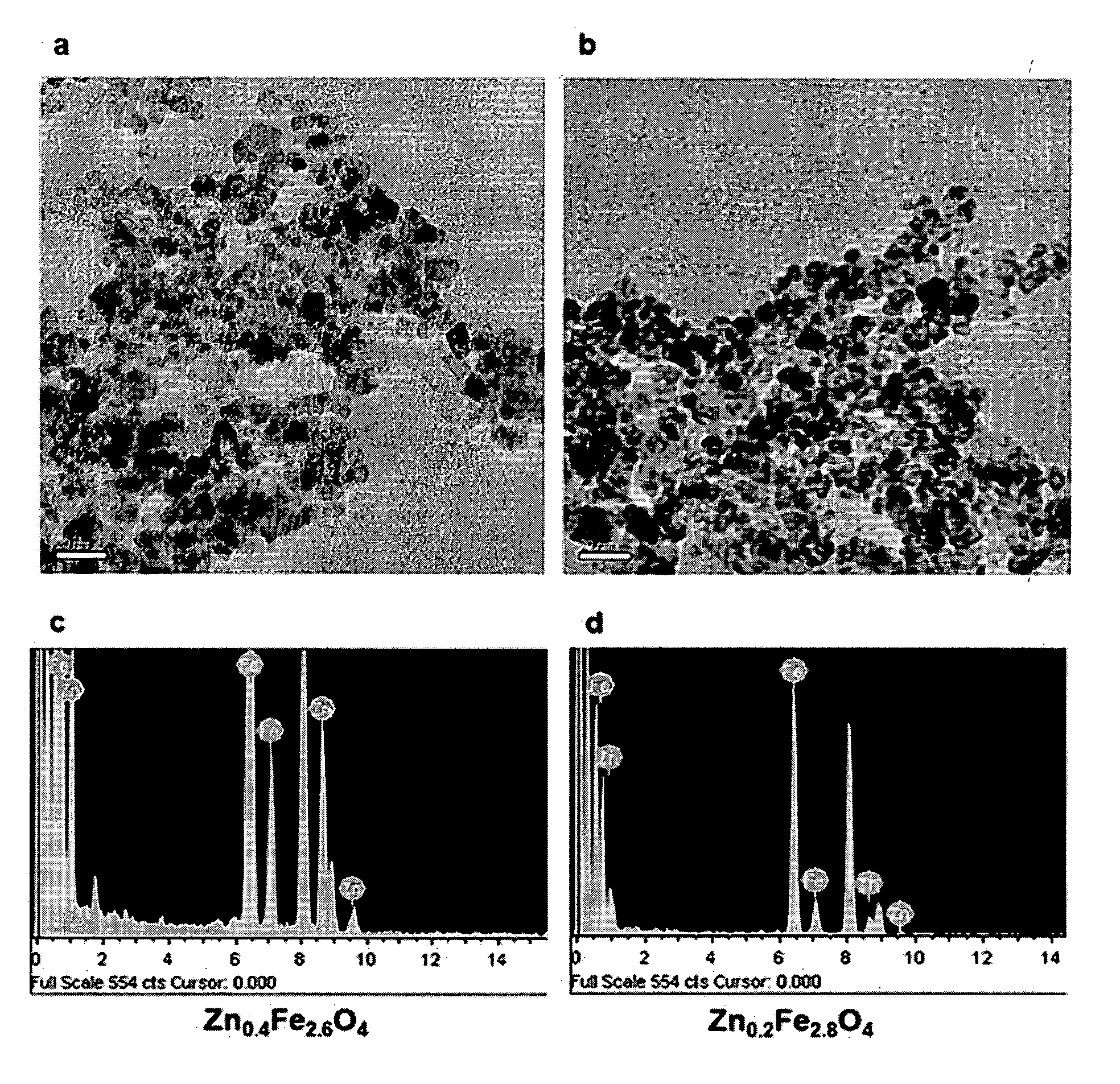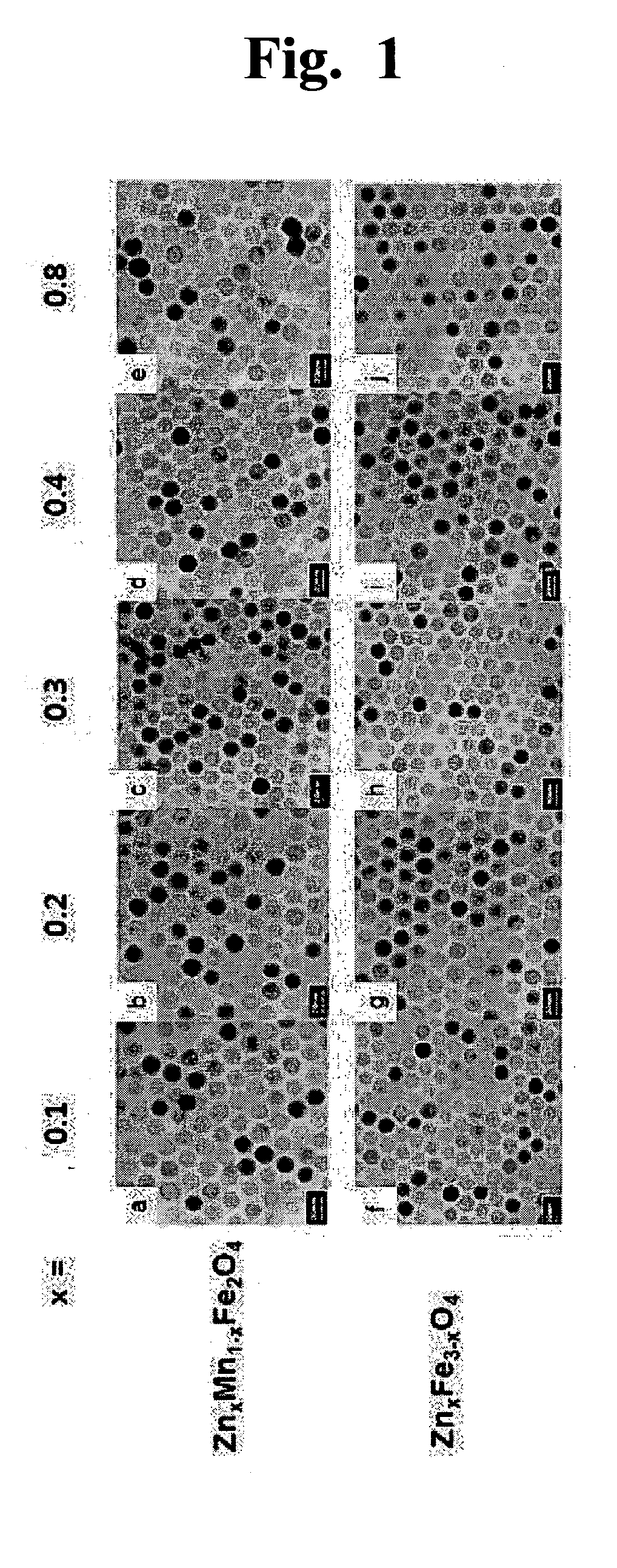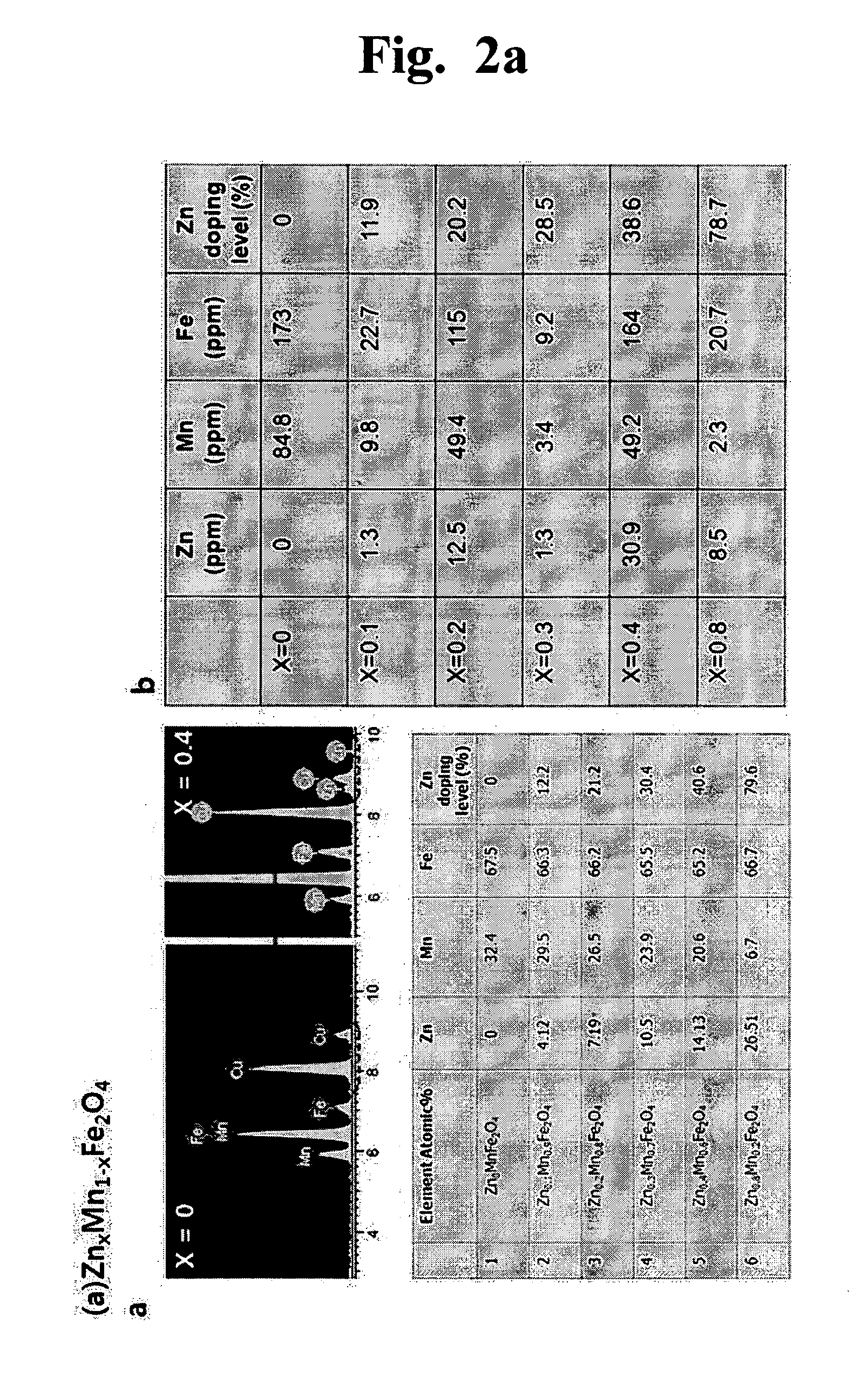Methods for Controlling Heat Generation of Magnetic Nanoparticles and Heat Generating Nanomaterials
- Summary
- Abstract
- Description
- Claims
- Application Information
AI Technical Summary
Benefits of technology
Problems solved by technology
Method used
Image
Examples
example 1
Preparation of Zinc-Containing Metal Oxide Nanomaterials
[0105]The metal oxide nanomaterial used in Examples was produced according to the methods described in Korean Pat. No. 10-0604975 PCT / KR2004 / 003088 and Korean Pat. No. 2006-0018921 filed by the present inventors. As precursors of nanoparticles, ZnCl2 (Aldrich, USA), MCl2 (M=Mn2+, Fe2+, Ni2+, and Co2+) (Aldrich, USA) and Fe(acac)3 (Aldrich, USA) were added to trioctylamine solvent (Aldrich, USA) containing 20 mmol oleic acid (Aldrich, USA) and 20 mmol oleylamine (Aldrich, USA) as capping molecules. The mixture was incubated at 200° C. under argon gas atmosphere and further reacted at 300° C. The synthesized nanoparticles were precipitated by excess ethanol and then the precipitated nanoparticles were again dispersed in toluene, obtaining a colloid solution. The synthesized nanoparticles were 15 nm-sized Zn0.4M0.6Fe2O4 (M=Mn2+, Fe2+, Ni2+, and Co2+) nanoparticles.
[0106]In addition, composition could be feasibly varied depending o...
example 2
Comparison of Saturation Magnetization (Ms) of ZnxM1-xFe2O4 (M=Fe or Mn, x=0, 0.1, 0.2, 0.3, 0.4, and 0.8) with Varying Zinc Content
[0107]15 nm-sized ZnxM1-xFe2O4 (M=Fe or Mn, x=0, 0.1, 0.2, 0.3, 0.4, and 0.8) nanoparticles were synthesized according to the method in Example 1 and their saturation magnetizations (Ms) in 3 Tesla were measured using a SQUID (Superconducting Quantum Interference Devices). As a result, each saturation magnetization (Ms) of ZnxM1-xFe2O4 (M=Fe or Mn, x=0, 0.1, 0.2, 0.3, 0.4, and 0.8) nanoparticles was 125, 140, 154, 166, 175 and 137 emu / g (Zn+Mn+Fe), respectively. Likewise, each saturation magnetization (Ms) of ZnxFe3-xO4 (x=0, 0.1, 0.2, 0.3, 0.4, and 0.8) nanoparticles also was 114, 126, 140, 152, 161 and 115 emu / g (Zn+ Fe), respectively. The saturation magnetization (Ms) of synthesized nanoparticles was represented in FIG. 3.
example 3
Comparison of Heat Generation of ZnxM1-xFe2O4 (M=Fe or Mn, x=0, 0.1, 0.2, 0.4, and 0.8) with Varying Zinc Content
[0108]To systematically compare heat generation value of ZnxM1-xFe2O4 (M=Fe or Mn, x=0, 0.1, 0.2, 0.4, and 0.8), heat generation from ZnxM1-xFe2O4 (M=Fe or Mn, x=0, 0.1, 0.2, 0.4, and 0.8) nanoparticles with different zinc amount under the magnetic field of high frequency was measured under condition of the equal concentration. Based on the time-dependent temperature changes in coil with 5 cm diameter in 5 mg / mL solution under the alternative current magnetic field (frequency: 500 kHz, current: 35 A) (FIG. 4), the specific loss powers of the nanoparticles were measured.
[0109]In the case adding zinc to the metal oxide nanomaterial such as manganese ferrite or iron oxide, the heat generation coefficient value is varied depending on the addition of zinc-content. Briefly, it is as follows. It was observed that the heat generation of both 15 nm-sized ZnxM1-xFe2O4 and ZnxFe3-xO...
PUM
 Login to View More
Login to View More Abstract
Description
Claims
Application Information
 Login to View More
Login to View More - R&D
- Intellectual Property
- Life Sciences
- Materials
- Tech Scout
- Unparalleled Data Quality
- Higher Quality Content
- 60% Fewer Hallucinations
Browse by: Latest US Patents, China's latest patents, Technical Efficacy Thesaurus, Application Domain, Technology Topic, Popular Technical Reports.
© 2025 PatSnap. All rights reserved.Legal|Privacy policy|Modern Slavery Act Transparency Statement|Sitemap|About US| Contact US: help@patsnap.com



